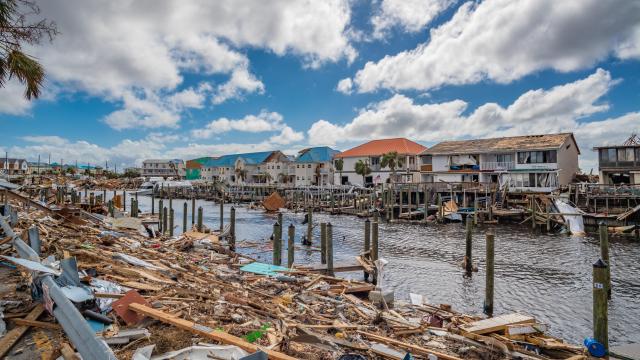The aftermath of a tropical storm can bring along some nasty waterborne germs, a recent study from Columbia University researchers found. The study shows that tropical cyclones in the U.S. over the past two decades have been linked to an increase in several infectious diseases afterward, including Legionnaires’ disease and toxic strains of E. coli bacteria. It’s likely that these storm-fueled outbreaks will only become a bigger problem in the years to come, the authors say, thanks to climate change and deteriorating public water systems.
Tropical storms are well known to be a risk factor for infectious disease outbreaks. The heavy rains and winds they cause can disturb the surrounding soil, allowing dangerous microbes to become temporarily airborne. Floodwaters can overwhelm septic or other water systems, contaminating clean sources of water. And the property damage wreaked by storms can cause people to get cuts and scrapes that make it easier for germs to enter the body.
There have been recent spikes of disease tied to individual storms in the U.S., such as an increase of Vibrio vulnificus infections—a rare but serious “flesh-eating” germ—in Florida last year following Hurricane Ian. But the authors of this new study, published this month in the journal Emerging Infectious Diseases, say they’re the first to take a look at the effect of tropical storms on specific infections in the U.S. over multiple storm seasons.
To do this, they analyzed data from the National Notifiable Diseases Surveillance System as well as storm data on tropical cyclones that made landfall between 1996 to 2018. They looked at six different waterborne infections (cryptosporidiosis, giardiasis, Legionnaires’ disease, Escherichia coli infections, salmonellosis, and shigellosis) in the states where at least one storm had occurred; they also focused on the months of June to November, the typical storm season.
All in all, the authors found a clear link between storms and three of these infectious diseases: Legionnaires’ disease, E. coli, and cryptosporidiosis. The more rainfall these storms caused, the more often these diseases were reported in the days and weeks after relative to their baseline rate. But there were important differences in how these storms appeared to affect the risk of catching these germs. E. coli cases surged in the first week after a storm, for instance, but returned to their normal rate by week three, while added cases of Legionnaires’ disease actually peaked in week three.
“In summary, we found that tropical cyclones represent a risk to public health in the United States, although findings for individual pathogens varied,” the authors wrote.
The study only covers tropical storms through 2018, but there are plenty of reasons to believe that the situation has and will only get worse from here. Climate change is expected to increase the intensity of tropical storms over time, making them even more destructive to the surrounding environment. Another looming major concern is the sorry state of America’s decrepit water infrastructure, with much of it needing to be upgraded or outright replaced.
There has been some recent progress made in shoring up our water systems, so not all hope is lost. But more research has to be done to understand how tropical storms can affect disease risk, the authors say, as well as to find ways to mitigate that harm.
“The U.S. sanitation infrastructure is aging, and the country will likely experience more severe storm-related flooding as a result of climate change,” they wrote. “Thus, identifying the drivers of pathogen transmission, and opportunities for intervention, will be crucial to reducing disease burden after cyclonic storm events.”
